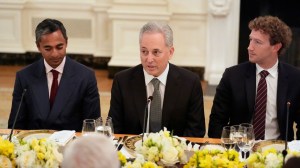By Dr. Rajib Dasgupta
Notwithstanding some anxieties and uncertainties, the G20 Leaders announced the Declaration on 9 September 2023. India’s G20 Presidency was centred around the motto of One Earth, One Family and therefore a shared One Future. These poignant words are more than a slogan, with India making a spectacular year-long effort to focus on key economic and social sector agenda. Held in the aftermath of the COVID-19 pandemic and the globally hottest summer ever, the health and climate agenda are unarguably central to human welfare. September 2023 is also an important milestone in the pursuit of the Sustainable Development Goals (SDG) 2030 as this marks the half-way mark.
What the G20, accounting for two-thirds of the world’s population and 80% of the global economic output, does on some of these key sectors could turn out to be veritable game changers.
Highlights of the Declaration
The core of the declaration is to strengthen global health and achieve universal health coverage (UHC) through the implementation of a One Health approach. The proposed action points include:
- Strengthening primary health care and health workforce to better than pre-pandemic levels, ideally within the next 2-3 years;
- Continue progress towards polio eradication and ending ongoing epidemics such as tuberculosis, malaria, hepatitis;
- Operationalise the Quadripartite’s One Health Joint Plan of Action (2022-2026);
- Implement and prioritise tackling Antimicrobial Resistance (AMR) following the One Health approach;
- Equitable access to safe, effective, quality-assured, and affordable vaccines, therapeutics, diagnostics, and other medical countermeasures; and,
- Promote and improve access to inclusive mental health services.
The chequered life history of Primary Health Care
Primary health care (PHC) has been the mantra since the Alma Ata declaration in 1978 with comprehensiveness, social justice, health equity and the social determinants of health as core values. The world has continued to struggle to make it work for those who need it the most and more so now with an ageing population and rising multimorbidity. The primary health care approach did not have much of a fighting chance with individual disease-centric selective primary health care (SPHC) emerging as the driving force in the 1980s.
Market driven health sector reforms in the following decades accentuated the challenges further. India has sought to correct some of these deviations through the National Rural Health Mission (NRHM)/ National Health Mission (NHM) that ushered in architectural changes in the health systems; it remains a work in progress though. The Astana Declaration in 2018 has sought to renew the political commitment to comprehensive primary health care (CPHC) towards the realisation of UHC. It recognises that vertical or quasi-vertical single disease control programmes entail high costs and potential policy distraction.
The ‘integrated approach’ to manage the HIV epidemic demonstrated that these programmes are not sustainable unless these are embedded in robust horizontal primary health care structures. A key welcome outcome of the SDG efforts has been to tap the potential of multisectoral collaboration. Targets that are essential to health improvement straddle across the other 16 SDGs, while achieving targets under the health SDG are dependent on success or progress of targets under other goals. At the same time, new-age tools such as digital health solutions, as emphasised in the Declaration, can play an important role in quality first line health care provision and improving health systems.
As a spinoff benefit, disaggregated health care data can contribute to timely detection and response to health emergencies. The focus on traditional medicine is also a positive development.
One Health is an unchartered territory
One Health approach seeks to improve the health of humans, animals, plants, and the environment, while contributing to sustainable development. The One Health Joint Plan of Action of the Quadripartite – the Food and Agriculture Organization of the United Nations (FAO), the United Nations Environment Programme (UNEP), the World Health Organisation (WHO), and the World Organisation for Animal Health (WOAH, founded as OIE) — aims to create a framework to integrate systems and capacity for more effective respond to health threats through enhanced prevention, prediction, and detection.
They key barrier to multisectoral action, whether for primary health care or One Health, is political and not technical. The G20 Leaders’ commitment can potentially be a watershed if pursued across the countries. One Health initiatives are by its very nature multidisciplinary in nature and entail working across ministries, navigating tacit institutional hierarchies, and allocating leadership roles. At the same time, it cannot be a mere governmental endeavour; the cooperation and active engagement of individuals, communities and society are essential building blocks.
The G20 nations will need to demonstrate the core value of consultative and collaborative leadership and foster innovation, adaptation, and flexibility in terms of political, financial, and administrative accountability. One Health initiatives should best avoid novel structures outside of the mainstream systems and are best embedded in existing institutional structures.
(The author is a professor of community health at the Jawaharlal Nehru University, New Delhi a co-investigator in the UKRI-GCRF One Health Poultry Hub, an international One Health research programme. Views expressed are personal and do not reflect the official position or policy of the FinancialExpress.com.)







